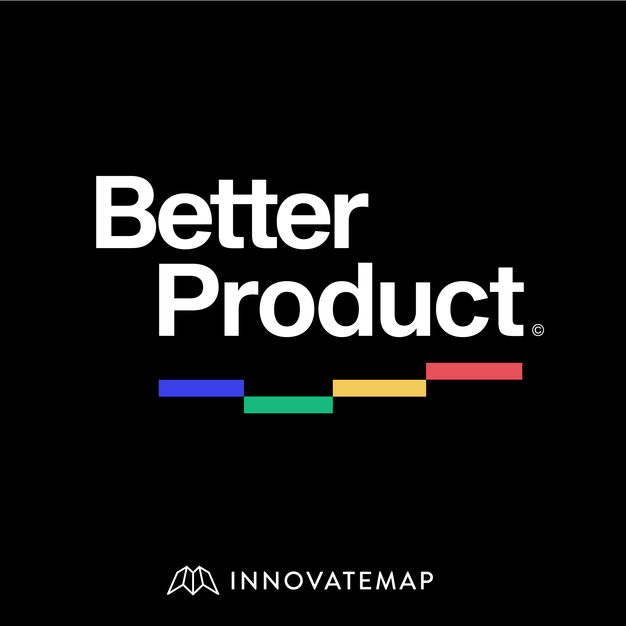
Better Product
Innovatemap
Digital products don’t just live online. They are made up of people, experiences, and awe-inspiring innovation. This show shares the stories of industry-leading companies whose products have a soul, a mission, and a vision.
- 42 minutes 36 secondsHow Product Marketers Lead As Company Quarterbacks with Kimberly Biddings, BIO-key International
Product marketing is at the intersection of many teams in a product company. The work of a product marketer supports the wider product team, sales, marketing, executive stakeholders, and most of all, buyers. It’s for this reason product marketers tend to play a quarterback role, says Kimberly Biddings, VP of Product at BIO-key International. As Kim knows from experience, they’re responsible for not just knowing a product in and out—they have to translate its selling points for others to use. Join Kim and Tina to hear more about the opportunities product marketers can bring to your growing organization.
Follow us on LinkedIn and Twitter to see the latest in Better Product, a show part of the Better Product Community powered by Innovatemap. The community is the connection point for product leaders & practitioners to learn and share what it takes to design, build, market, and sell better products. Learn more at betterproduct.community.
Takeaways:
- Product marketing starts from the second there’s a business idea.
- Growing a business without product marketing is like driving a car without direction: aimless and unpredictable.
- There’s more than one way to be a product marketer.
Things To Listen For:
-
[0:30] Icebreaker: Who is on your dream interview list (aside from the amazing guests we talked to for Unlock Product Marketing)?
-
[2:00] Why did we create this series?
-
[4:00] Introducing today's guest, Kimberly Biddings of BIO-key International
-
[6:00] Takeaway: there are different kinds of product marketers, not just one
-
[7:00] Intro to Kimberly Biddings and her cybersecurity product marketing career
-
[8:30] How Tina and Kim met with product marketing and brand work through Innovatemap
-
[10:00] In the beginning, many people did product marketing in marketing roles
-
[10:30] What is a regional product manager? And why teams still need PMM advocates.
-
[12:00] What are the jobs to be done by product marketing?
-
[14:00] Product marketers are like company quarterbacks
-
[15:00] If you need product marketing from day one, why is it typically one of the last roles to be hired?
-
[16:00] The seven stages of product marketing as a company scales
-
[18:30] You have to market yourself as a product marketer so people understand it
-
[21:00] Find bite-sized ways to inject product marketing strategy into your interactions
-
[27:30] Product marketing’s first question: does anyone actually care about this?
-
[29:00] Don’t start with the what, start with the why
-
[31:00] Always consider “who are you talking to?” and “what are you saying?”
-
[38:00] Be your product manager’s best friend
28 June 2022, 9:00 am - 38 minutes 17 secondsWhy Your Positioning Should ‘Pick a Fight and Take a Stand’ with Catherine Spence, Microblink
One of the fundamental strategies product marketers must lead is positioning. It’s what determines how you’ll talk about your product, your company, and your brand as you scale. So why do so many people get it wrong? Catherine Spence, VP of Global Marketing at Microblink, joins Leanna to share her best lessons on brand and product positioning, from leading marketing at an international company to her own startup, Pomello. If you’re looking to stay in your comfort zone, this isn’t the episode for you. Catherine shows us why we need to use our positioning to pick a fight and take a stand, especially in B2B SaaS.
Follow us on LinkedIn and Twitter to see the latest in Better Product, a show part of the Better Product Community powered by Innovatemap. The community is the connection point for product leaders & practitioners to learn and share what it takes to design, build, market, and sell better products. Learn more at betterproduct.community.
Takeaways:
- Positioning gives you focus. You can’t be everything to everyone.
- Product positioning should make you think.
- Brand positioning should make you feel.
- Don’t prioritize brand positioning until you have product-market fit.
Things To Listen For:
- [2:00] Icebreaker: If you had to write an autobiography and name it after one of your guilty pleasures, what would you call it?
- [3:00] What’s the difference between brand positioning and product positioning? How do marketers and PMMs work together to define it?
- [7:00] Introducing Catherine Spence and her role at Microblink
- [9:00] PMM is the intersection of product, marketing, and sales
- [11:00] The ask of product marketing is simple. But it’s difficult to do well.
- [12:00] How Microblink thinks about brand positioning vs. product positioning when marketing AI when the world isn’t familiar with it yet
- [13:00] The deceiving similarities between product positioning and brand positioning, and what unites them at the core
- [14:00] Brand positioning should be internal and external
- [15:00] How do brand positioning and product positioning work together?
- [16:00] All positioning should reflect your vision and who you want to be in the world. When are you willing to walk away?
- [19:00] Why B2B product marketers and marketers need to position products that “pick a fight and take a stand” for their products
- [22:30] Clear positioning doesn’t just make sense. It makes dollars.
- [23:00] When is the best time to focus on brand positioning?
- [26:00] Use your vision statement to anchor your brand positioning
- [28:00] The role of employer brand in positioning
- [36:00] The future of PMM: how do we find great product marketers?
21 June 2022, 9:00 am - 37 minutes 22 secondsProduct Marketing’s Essential Purpose with Martina Lauchengco, Author of LOVED
In today’s world, building a great product isn’t enough. You have to master your go-to-market strategy by telling a story that will leave a lasting impression on your audience. Product marketing gets you there, according to long-time product marketer and Costanoa Ventures partner Martina Lauchengco.
Martina is the author of the latest book from the esteemed Silicon Valley Product Group, LOVED: How to Rethink Marketing for Tech Products. Alongside Tina and Leanna, she explores how her career start as a product manager equipped her with the product curiosity and technical competence needed to thrive when marketing digital products. She shows us today how to think about product marketing as the discipline it is and how companies should be leveraging it if they want their product to be recognized and adopted.
Follow us on LinkedIn and Twitter to see the latest in Better Product, a show part of the Better Product Community powered by Innovatemap. The community is the connection point for product leaders & practitioners to learn and share what it takes to design, build, market, and sell better products. Learn more at betterproduct.community.
Takeaways- Product marketing tells the world why your product matters and why it’s distinct from something similar.
- Product marketers must be genuinely interested in what products do and why the product exists to make it meaningful for the market.
- [0:30] Introducing our guest hosts, Innovatemap’s Tina Hafer and Leanna Adeola
- [2:00] Why did we create the Unlock Product Marketing series?
- [3:00] Icebreaker: If you had the time to write a book, what would it be about?
- [4:00] Previewing our conversation with Martina Lauchengco
- [10:30] An introduction to Martina Lauchengco, starting her career in product management at Microsoft, and the evolution of product marketing
- [15:00] Why Martina wrote LOVED: companies need a template for PMM
- [15:30] Product marketing’s evolution: it’s now a discipline central to organizations
- [16:30] Introducing Martina’s four fundamental roles of product marketing:
- Ambassador — product marketers connect customer and market insights
- Strategist — product marketers direct a product’s go-to-market
- Storyteller — product marketers shape perceptions of product
- Evangelist — product marketers empower others in your company to represent and share the product
- [17:30] “You do not need the title ‘product marketer’ to be driving forward the most important product marketing”
- [18:30] In early-stage companies, founders tend to lead product marketing
- [19:00] Growth requires using product marketing to shape markets
- [20:00] The importance of product curiosity and technical competence
- [25:30] Why good product marketers share many qualities with good product managers
- [29:00] Data is essential to finding your product marketing focus, especially as you enter your growth stage as a company
- [30:00] There’s never just one obstacle to growth, and PMMs give us the high-level perspective we need to see where problems intersect
14 June 2022, 9:00 am - 1 minute 27 secondsTrailer: Unlock Product Marketing
Product marketing is the foundation for better product. It should play a strategic role in your business from day one. It's a product discipline to master and respect—not just a list of jobs to be done.
But product marketers continue to struggle with recognition. Because the discipline is still new, the way product leaders think about product marketing is continuously evolving.
That’s why Innovatemap’s Tina Hafer and Leanna Adeola are taking over the Better Product podcast for a special series on the power of product marketing. Alongside fellow industry experts, they’ll explore why digital products need product marketing to accelerate growth, how company leaders can best equip product marketers, and the potential product marketers have as the translation point between product, sales, marketing, executives, and most of all, your audience.
We're exploring product marketing's past, present, and future with:
- Martina Lauchengco, author of LOVED: How to Rethink Marketing for Tech Products, and partner at Costonoa Ventures
- Catherine Spence, VP of Global Marketing at Microblink
- Kim Biddings Johnson, VP of Product at BIO-key International
Follow us on LinkedIn and Twitter to see the latest in Better Product, a show part of the Better Product Community powered by Innovatemap. The community is the connection point for product leaders & practitioners to learn and share what it takes to design, build, market, and sell better products. Learn more at betterproduct.community.
9 June 2022, 9:30 am - 30 minutes 5 secondsThe Power of Your Positioning
How you position your product can help you connect with the people who most need it, unlocking rapid growth for your company. But first, you need a solid foundation. Today, Christian and Meghan discuss what product leaders get right vs. wrong when positioning their products. Led by Meghan’s insights in product marketing, we’ll also walk through a process any team can use to find a position that will give you a cutting edge while letting you stay true to who you are.
Follow us on LinkedIn and Twitter to see the latest in Better Product, a show part of the Better Product Community powered by Innovatemap. The community is the connection point for product leaders & practitioners to learn and share what it takes to design, build, market, and sell better products. Learn more at betterproduct.community.
Takeaways:
- To create a positioning strategy, you need:
-
- A foundational statement that is the truth of your product
- Benefit pillars that focus on your differentiators
- A description of your product features as proof
- Positioning work is internal, but it should inform the external.
- Test your positioning’s effectiveness by asking if it’s simple, meaningful, repeatable, and relevant.
Things To Listen For:
[1:30] Friday recordings, turning 40, and why smart people have worse memories
[2:30] Icebreaker: if you could debate anyone, real or not, who would it be?
[3:00] Meghan’s hot take: “90% of cars are so much uglier than they have to be”
[4:00] Christian’s defense of minivan designs and the 2014 Toyota Sienna
[9:30] Today’s topic: how we shape perceptions of our product with positioning
[10:00] Positioning says who you are and why you matter
[11:00] “Positioning at its core is your north star; it should set the course”
[12:00] How appreciation for positioning in product has evolved over time
[12:30] Increasingly, product marketers and product designers are working together to bring positioning to life (see our episode on Pinterest)
[13:30] Can you tell if a product is positioned well from an outside perspective?
[14:30] Your positioning works if it’s simple, meaningful, repeatable, and relevant
[15:00] Positioning statements must be factual and true to who you are
[16:30] Positioning explains why your designers are designing, and for whom
[18:00] How to start applying your positioning to a product roadmap
[20:00] What to do about positioning when you’re an in-house product marketer
[24:00] Why to revisit positioning as your company grows and hires new leaders
[25:30] Consider changing your positioning when something foundational shifts
[28:00] Previewing our upcoming series, Unlock Product Marketing
j3UA7CRzZSpZyfw6gjIN31 May 2022, 9:00 am - 33 minutes 35 secondsElon Musk, Twitter, and Ego in Product
For better and for worse, ego follows us all into our work lives. But leaders must pay special attention to what role ego plays in building a product. Sometimes, ego can be the charisma an early-stage founder needs to get attention for what they’re creating. Other times, ego is a roadblock that can lead to ignoring critical perspectives from users and the product team. Using Elon Musk’s Twitter purchase as a case study, today’s show explores what role ego plays in product, when to use it to your advantage, and when to empower others to take charge.
Follow us on LinkedIn and Twitter to see the latest in Better Product, a show part of the Better Product Community powered by Innovatemap. The community is the connection point for product leaders & practitioners to learn and share what it takes to design, build, market, and sell better products. Learn more at betterproduct.community.
Takeaways:
- Ego can help people believe in your product, but it can’t guide everything.
- Strive to create a “cabinet of rivals” to balance your product perspective.
- How you position your product should be true AND feel true.
Things To Listen For:
[1:00] A new room for Erica’s new role: “product therapist”
[4:00] Our icebreaker: what company would you buy if you had the money?
[10:00] Twitter’s new features and overall progress in the digital product space
[14:00] Ego can have an outsized influence in spaces that are driven by people, including social networks like Twitter
[16:00] “You can’t scale human behavior the way that you scale battery factories” - and social platforms scale “the best and the worst” of humanity
[20:00] How to think about ego in your own product career
[23:30] Strive to have a “cabinet of rivals” to keep your ego in check
[24:00] You need ego in the early stage to rally people around your product vision
[25:30] You need a little bit of ego to sell a new or unusual idea—because if you don’t believe in it, no one else will
[26:00] How to think about ego when creating your positioning statement
[28:00] Positioning statements about your product can be like “Tinker Bell”
[29:30] Don’t be a dictator; trust your product team to create to the vision
24 May 2022, 9:00 am - 32 minutes 28 secondsWhen It's Time For A Product Glow-Up
Everything has to start somewhere. But in product and in life, the beginning tends to be awkward. We have room to grow, and glow, up. The real question isn’t about whether we’ll glow up, but when. Christian & Meghan walk us through their answers from working in UX, product marketing, and brand to help us all find the best moment to embrace the “product glow-up” while staying true to our vision.
Follow us on LinkedIn and Twitter to see the latest in Better Product, a show part of the Better Product Community powered by Innovatemap. The community is the connection point for product leaders & practitioners to learn and share what it takes to design, build, market, and sell better products. Learn more at betterproduct.community.
Takeaways:
- Don’t be afraid to get started and make a mess.
- Before you can glow up, you have to find product-market fit.
- Your first users are your strongest advocates; learn from them.
- If you only make tweaks but avoid the overall experience, you fall behind.
Things To Listen For:
- [3:00] Icebreaker: what’s something that gives you a sense of nostalgia?
- [6:00] When nostalgia gets complicated and the “worst decade for style”
- [7:00] Our apologies to Dave Grohl, if you’re listening out there
- [8:00] Introducing the product glow-up
- [10:00] The big question: when is the right time for a product glow-up?
- [11:00] The awkward phase is when you’re trying to find product-market fit
- [11:30] Why not to glow up your product or brand too early
- [12:30] You shouldn’t invest everything in creating a great brand until you know what your product is
- [13:00] In the beginning, you need to be focused on what people will buy
- [14:30] Lessons from tech boom companies that invested in brand upfront
- [15:30] How product glow ups are like an episode of What Not To Wear
- [17:30] Early adopters don’t buy because you have a good brand or UX; they buy because they connect with your vision
- [20:00] If you’re going to be trendy, make sure your choices are intentional
- [23:00] The influence of tech debt on when you need a glow-up
- [24:00] Signals (and red alarms) for when it’s glow-up time 🚨
- [28:00] A quick case study: Peloton and products in COVID
17 May 2022, 9:00 am - 25 minutes 38 secondsHow Product Research Limits Uncertainty and Helps Us Face Our Fears
Product research is a discipline that’s transformed in recent years. The days of waterfall testing are over. Today, research is happening at every stage of a product’s life cycle, and there are more tools than ever before to help. But how do product teams stay focused on what truly matters? How do we single out real insights from an outpouring of data? Christian & Meghan unpack their lessons learned about product research and examine how the field has evolved. They’ll also explain why research isn’t actually about finding answers; it’s about limiting uncertainty.
Follow us on LinkedIn and Twitter to see the latest in Better Product, a show part of the Better Product Community powered by Innovatemap. The community is the connection point for product leaders & practitioners to learn and share what it takes to design, build, market, and sell better products. Learn more at betterproduct.community.
Takeaways:
- Product research has evolved from a waterfall approach to a continuous approach; research is happening at more stages, and more often.
- Research is about limiting uncertainty, and not finding the answer.
- It’s best to “measure twice to cut once” in product research.
Things To Listen For:
- [3:00] Icebreaker: what’s your best/worst research paper from school?
- [8:30] The evolution of product research and how it continues to change
- [9:00] Research is what makes better products possible
- [10:00] From Christian: In the beginning, research focused on what happened after your product made it into the world
- [10:30] Now, research is happening earlier and contributing idea
- [11:00] The difference today: research is about insights, not just data
- [12:00] When stakeholders disagree on the importance of research
- [13:00] Overcoming the fear of research (and the ideas it might diminish)
- [13:30] “Once you know what the research tells you, you have to act on it”
- [14:30] Barriers to research in startups include time, the founder’s connection to the market
- [16:00] The shift from waterfall research to continuous research
- [16:30] Who does research and the rise of digital products for research
- [17:30] “Measure twice to cut once” when conducting research
- [19:30] You need both good research products and research professionals (as we explored with Amplitude’s Justin Bauer in supporting PMs with data)
- [22:00] Let your product research be experimental
- [23:00] Don’t over-index the voice of your customer
10 May 2022, 9:00 am - 37 minutes 15 secondsExperience-Driven Products for Relationship Wellness with the Founders of Ours
Today we’re talking about love—but not in the way you think. We’re looking at the intersection of product and a timeless human experience: falling in, and out, of love. Forget couples counseling as you know it. Ours co-founders Liz Earnshaw, Jessica Holton, and Adam Putterman are using their relationship wellness platform to reduce stigma and build “software for love.” In conversation with Christian & Meghan, the Ours founders will help you cherish the couple experience (and building great products) all over again.
For more insights on how product is shaping modern health and wellness, revisit our series on Health Tech.
Follow us on LinkedIn and Twitter to see the latest in Better Product, a show part of the Better Product Community powered by Innovatemap. The community is the connection point for product leaders & practitioners to learn and share what it takes to design, build, market, and sell better products. Learn more at betterproduct.community.
Takeaways
- Experience-driven products keep people at the center of tech.
- A brand plays a big role in reducing stigma around health products.
-
- Try a consumer look that will get your audience excited.
- Use symbolic language to show your audience the bigger picture.
Things To Listen For
- [2:00] Introductions & our fave love stories, from Jim & Pam to Bride Wars
- [8:00] How the idea for Ours was born from personal experiences in relationship counseling, from the patient and therapist POV
- [8:30] The intention: make couples therapy something worth celebrating
- [9:30] Why couples therapy can be like going to a spa or yoga retreat
- [10:30] The role of technology in creating better therapy, from patient onboarding to tracking
- [13:00] There are enough therapists in the world, but not enough ways to get connected with the patients who need them
- [13:30] The difference between proactive and reactive couples therapy
- [15:00] What it means to create an experience-driven product
- [16:00] Ours should feel like a hot yoga class: challenging but worthwhile
- [16:30] How Ours blends live guided sessions with asynchronous “loveware”
- [19:30] How the Ours brand breaks down barriers to relationship wellness
- [20:30] Balancing playfulness & expression in the Ours brand with sincerity
- [24:00] Making relationship wellness normal by making it public
- [27:30] Why Ours primarily focuses on engaged couples
- [33:30] “Our closest relationships are the number one predictor behind health and happiness”
3 May 2022, 10:00 am - 37 minutes 37 secondsMessaging Mix-Ups and How to Avoid Them
Messaging is the story we tell about our product. But how do we know if we’re telling the right story? To talk about your product, you need to learn from the audience you serve, while never losing sight of the bigger picture your market provides. Christian & Meghan will share their observations on product messaging best practices and red flags to avoid; plus, they’ll explain why the best messaging is often the simplest. They’ll also attempt to message their own lives, as inspired by quotes from comment section fights and the great Humphrey Bogart.
Revisit our episode with Peep Laja of Wynter for more insights on product messaging and how to get better, faster feedback on its effectiveness.
Follow us on LinkedIn and Twitter to see the latest in Better Product, a show part of the Better Product Community powered by Innovatemap. The community is the connection point for product leaders & practitioners to learn and share what it takes to design, build, market, and sell better products. Learn more at betterproduct.community.
Takeaways:
- Positioning is the north star that guides your product decisions; it’s the foundation that leads to good messaging.
- Successful messaging allows you to share specific messages with the different personas in your audience.
- Good messaging isn’t just clear about who you are; it says who you are not.
Things To Listen For:
- [1:30] Messaging our own lives with internet quotes and actor mottos
- [5:00] The power of pumping brakes, on Twitter and in real life
- [7:30] Positioning is the most truthful description of what your product does
- [8:30] Messaging is born from positioning, organized around benefit pillars
- [9:00] Focus on messaging your top three benefits or differentiators
- [10:00] Why positioning tends to be more challenging than messaging
- [11:00] Positioning doesn’t have to be pretty; it just has to be true
- [12:00] Why the exact same message won’t work for your entire audience
- [14:00] The attributes of good messaging: clarity & a distinct voice
- [14:30] Great messaging requires more than a fun tone; not everyone can be Dollar Shave Club…
- [15:00] …but B2B companies also aren’t sentenced to being boring
- [17:30] The paradox of claiming a niche
- [20:00] Good messaging is hard to identify; that’s what makes it good.
- [21:00] Examples of early-stage messaging from Clay and Ozone
- [25:00] Why analogies and metaphors are so powerful in messaging
- [28:00] Red flags and common traps to avoid when messaging your product
26 April 2022, 9:30 am - 37 minutes 23 secondsHarnessing Fast Feedback for Better Product Marketing with Peep Laja, Wynter
Product marketing is an evolving field with much left to define about what product marketers can actually measure and support. Peep Laja founded his company, Wynter, on the belief that product marketers do better work with swift, real-time feedback on their product messaging. In today’s conversation, he explains why taking weeks (or even months) to do critical testing and validation puts your product in a losing position. He’ll also describe how Wynter is helping B2B product marketers get impactful insights on their product’s messaging & positioning, without wasting time on KPIs that keep you looking in the rearview mirror.
Want to get even better at B2B product marketing? Follow along with Peep’s How to Win podcast and the Wynter newsletter.
Follow us on LinkedIn and Twitter to see the latest in Better Product, a show part of the Better Product Community powered by Innovatemap. The community is the connection point for product leaders & practitioners to learn and share what it takes to design, build, market, and sell better products. Learn more at betterproduct.community.
Takeaways:
- If you wait to test and validate your product marketing, you lose.
- Product marketers should prioritize the speed of feedback.
- When marketing your product, prioritize function over form.
- The best differentiation is to actually be different.
Things To Listen For:
[1:30] An introduction to Peep (and a callback to an episode he inspired)
[2:00] Better copy leads to conversion. But how do you know if your copy is good?
[3:00] How Wynter can give you direct feedback from your target customer
[6:00] Product marketing is ultimately about finding common ground between opinions—from your marketers, your sales team, your CEO, and your customers
[7:30] Wynter’s goal is to speed up feedback loops; no more waiting for insights
[9:00] Wynter democratizes user research, even if you’re not a research expert
[9:30] Product marketing is troublesome because it’s a new & evolving role
[10:00] Don’t let your product marketers be “deck monkeys”
[13:00] Revenue as a metric is like looking through the rearview mirror
[14:30] Peep’s 5 buckets for understanding product messaging:
- Clarity - does your audience “get it”? Do they want it?
- Relevance - are you speaking about things that are a high priority?
- Desirability - is your product’s value understood? Do people want it?
- Differentiation - have you made clear how your product stands out?
- Brand - are you creating the right perception for your product?
[17:00] “Messaging and copy are the manifestations of your positioning”
[21:00] Clarity in messaging is key: “if they don’t get it, they’re not going to buy it”
[23:30] Don’t treat your website homepage like Netflix
[24:30] What it looks like to sell a category vs. sell a narrative
[30:00] Differentiation also comes down to how you see yourself
19 April 2022, 9:30 am - More Episodes? Get the App
Your feedback is valuable to us. Should you encounter any bugs, glitches, lack of functionality or other problems, please email us on [email protected] or join Moon.FM Telegram Group where you can talk directly to the dev team who are happy to answer any queries.
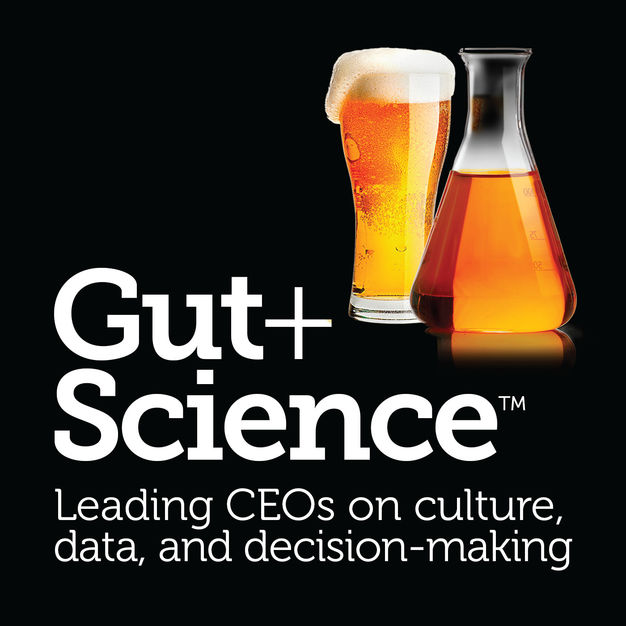 Gut + Science
Gut + Science
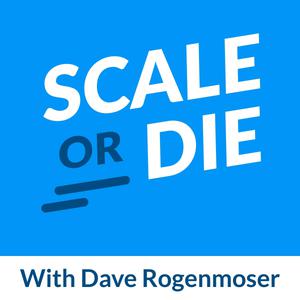 Scale or Die
Scale or Die
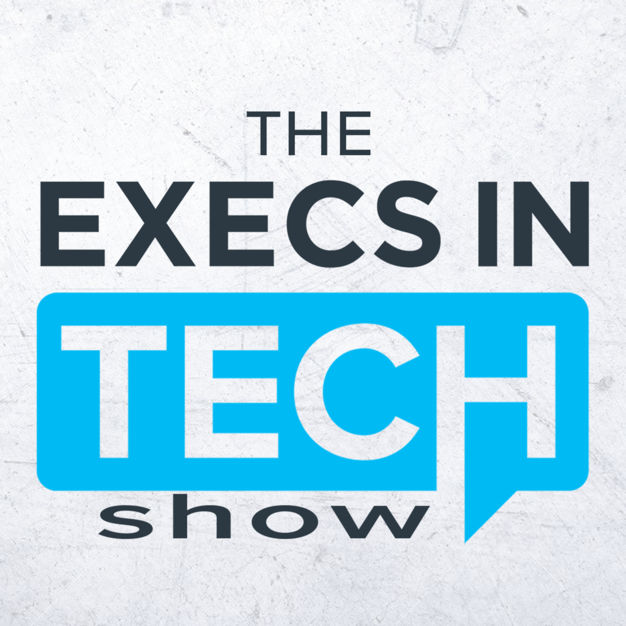 Execs in Tech
Execs in Tech
 IoT For All Podcast
IoT For All Podcast
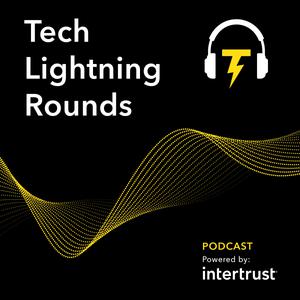 Tech Lightning Rounds
Tech Lightning Rounds